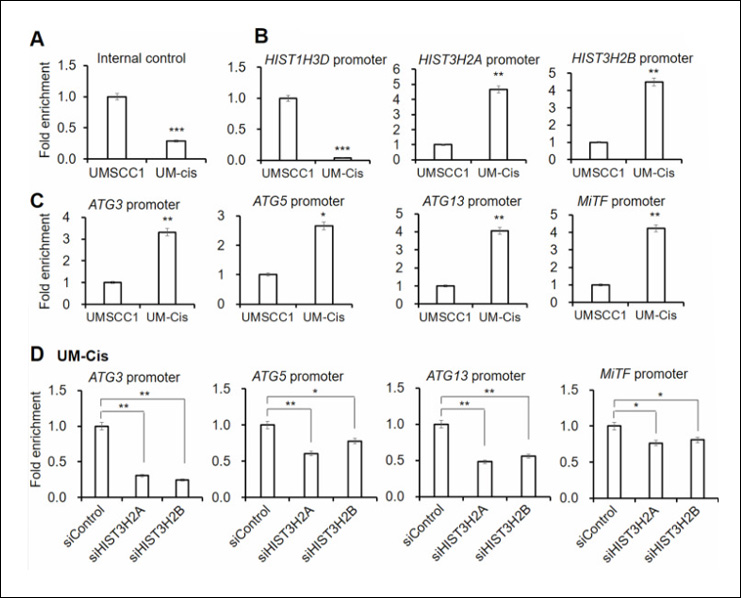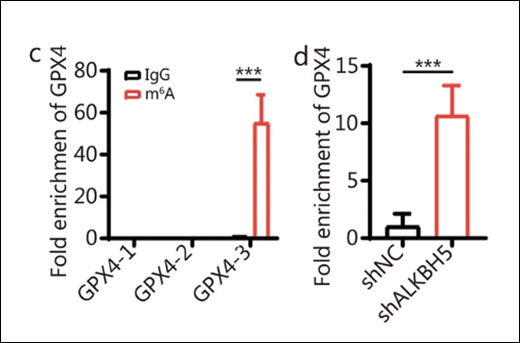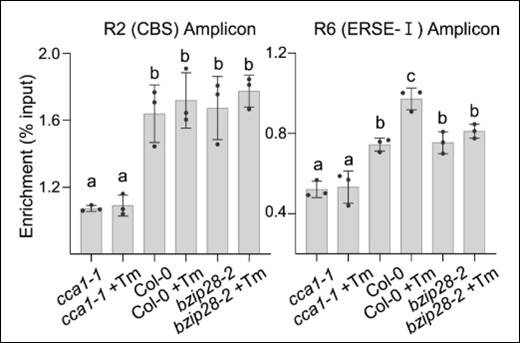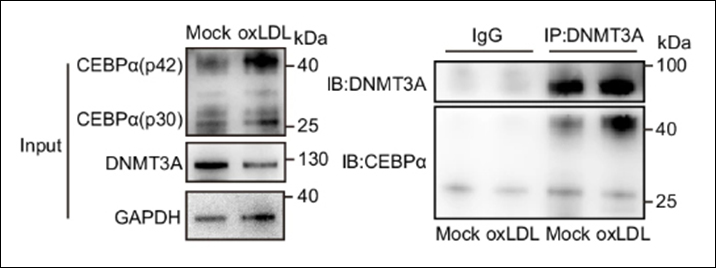Adams-Sherrod GA et. al. (July 2024). Sex-specific modulation of renal epigenetic and injury markers in aging kidney Am J Physiol Renal Physiol.
This study examines how sex and age affect kidney epigenetic and injury markers in mice. Female mice exhibited significant age-related changes in kidney weight, serum creatinine, and albumin levels, while males had elevated histone 3 levels. Both sexes showed increased kidney injury markers and NF-κB signaling with age. Females had higher histone acetyltransferase activity but lower H3 methylation and histone methyltransferase activity compared to males. Klotho levels were higher in young males but decreased with age, while its repressor H3K27me3 increased in both sexes. These results reveal sex-specific differences in renal aging and epigenetic regulation.
Products Used: EpiQuik Histone Methyltransferase Activity/Inhibition Assay Kit (H3K9), EpiQuik Histone Methyltransferase Activity/Inhibition Assay Kit (H3K27), EpiQuik Circulating Total Histone H3 Quantification Kit (Colorimetric), EpiQuik Global Histone H3K9 Methylation Assay Kit, EpiQuik Global Histone H3K27 Methylation Assay Kit, EpiQuik HAT Activity/Inhibition Assay Kit, Epigenase HDAC Activity/Inhibition Direct Assay Kit (Colorimetric)
Kim JW et. al. (June 2024). P7C3 ameliorates barium chloride-induced skeletal muscle injury activating transcriptomic and epigenetic modulation of myogenic regulatory factors J Cell Physiol.
This study explores P7C3's role in repairing barium chloride-induced muscle injury. P7C3 treatment in mice led to better muscle regeneration, more myonuclei and blood vessels, and reduced serum CK activity. RNA-sequencing showed increased genes related to cellular processes, inflammation, angiogenesis, and muscle development. Chromatin analysis revealed higher expression of Pax7, Myf5, MyoD, and Myogenin, along with increased histone modifications. P7C3 also enhanced myotube fusion in vitro and reduced inflammation in macrophage cells, highlighting its potential for improving muscle repair and angiogenesis.
Products Used: EpiQuik Total Histone Extraction Kit, EpiQuik Histone H3 Modification Multiplex Assay Kit (Colorimetric)
Attia SM et. al. (July 2024). Dulaglutide reduces oxidative DNA damage and hypermethylation in the somatic cells of mice fed a high-energy diet by restoring redox balance, inflammatory responses, and DNA repair gene expressions J Biochem Mol Toxicol. 38(7):e23764.
This study assesses dulaglutide's impact on DNA damage and hypermethylation in obese mice. After 12 weeks on a high-fat diet, mice showed increased body weight, DNA damage, oxidative stress, and hypermethylation, along with altered inflammation and redox balance. A 5-week dulaglutide treatment reduced DNA damage and oxidation, improved redox balance, and normalized inflammation and DNA repair gene expression. These results suggest that dulaglutide helps maintain DNA integrity and mitigate obesity-related damage.
Products Used: FitAmp Blood and Cultured Cell DNA Extraction Kit
Alhaji JH et. al. (July 2024). Role of NQO1 gene involvement and susceptibility of T2DM among Saudi Arabia population Rejuvenation Res.
This study examines NQO1 gene variants and their impact on Type 2 Diabetes Mellitus (T2DM) in Saudi Arabia. Among 100 T2DM patients and 100 healthy controls, significant differences were found in NQO1 genotypes (p=0.04). CT and TT genotypes were linked to higher T2DM risk, with odds ratios of 1.96 and 3.31, respectively. Reduced NQO1 mRNA expression was observed in CT and TT genotypes compared to CC. Vitamin D deficiency was associated with increased NQO1 expression in T2DM patients. These results highlight NQO1 polymorphisms and vitamin D levels as factors in T2DM severity and progression.
Products Used: BisulFlash DNA Modification Kit
Colciago A et. al. (June 2024). Electromagnetic field-induced adaptive response in Schwann cells through DNA methylation, histone deacetylation, and oxidative stress J Cell Physiol. :e31365.
This study investigates how exposure to electromagnetic fields (EMF) affects Schwann cells (SCs) and their potential role in schwannoma development. Using an in vitro model, researchers exposed SCs to EMF (0.1 T, 50 Hz, 10 min) and observed changes in cell proliferation and migration. The study highlights that EMF exposure induces epigenetic modifications, including DNA methylation and histone deacetylation, along with oxidative stress. These changes lead to a less-physiological state in SCs, which may contribute to their transformation and schwannoma development.
Products Used: MethylFlash Global DNA Methylation (5-mC) ELISA Easy Kit (Colorimetric)
Liang G et. al. (July 2024). α-Ketoglutarate plays an inflammatory inhibitory role by regulating scavenger receptor class a expression through N6-methyladenine methylation during sepsis Eur J Immunol. :e2350655.
This study explores how α-Ketoglutarate (α-KG) influences inflammation during sepsis by regulating scavenger receptor class A (SR-A5) expression. Researchers found that α-KG reduces inflammatory markers and tissue damage in septic mice, affecting metabolic reprogramming and macrophage polarization. α-KG regulates SR-A5 expression by reducing N6-methyladenosine levels through up-regulation of the m6A demethylase ALKBH5. These findings highlight α-KG's role in mitigating inflammation during sepsis via epigenetic modulation of SR-A5 expression.
Products Used: EpiQuik m6A RNA Methylation Quantification Kit (Colorimetric)
Li YM et. al. (July 2024). Neural Tissue-Like, not Supraphysiological, Electrical Conductivity Stimulates Neuronal Lineage Specification through Calcium Signaling and Epigenetic Modification Adv Sci (Weinh). :e2400586.
This study examines how electrical conductivity affects neural lineage specification using substrates with varying conductivities. Low conductivity (0.02-0.1 S m-1) promotes neuronal differentiation and epigenetic changes, such as increased H3 acetylation, better than high conductivity (3.2 S m-1), which causes apoptosis and calcium overload. Optimal conductivity is crucial for effective neuronal differentiation and repair in neural interfaces.
Products Used: Histone H3 Monoclonal Antibody [1G1]




 Cart (0)
Cart (0)













